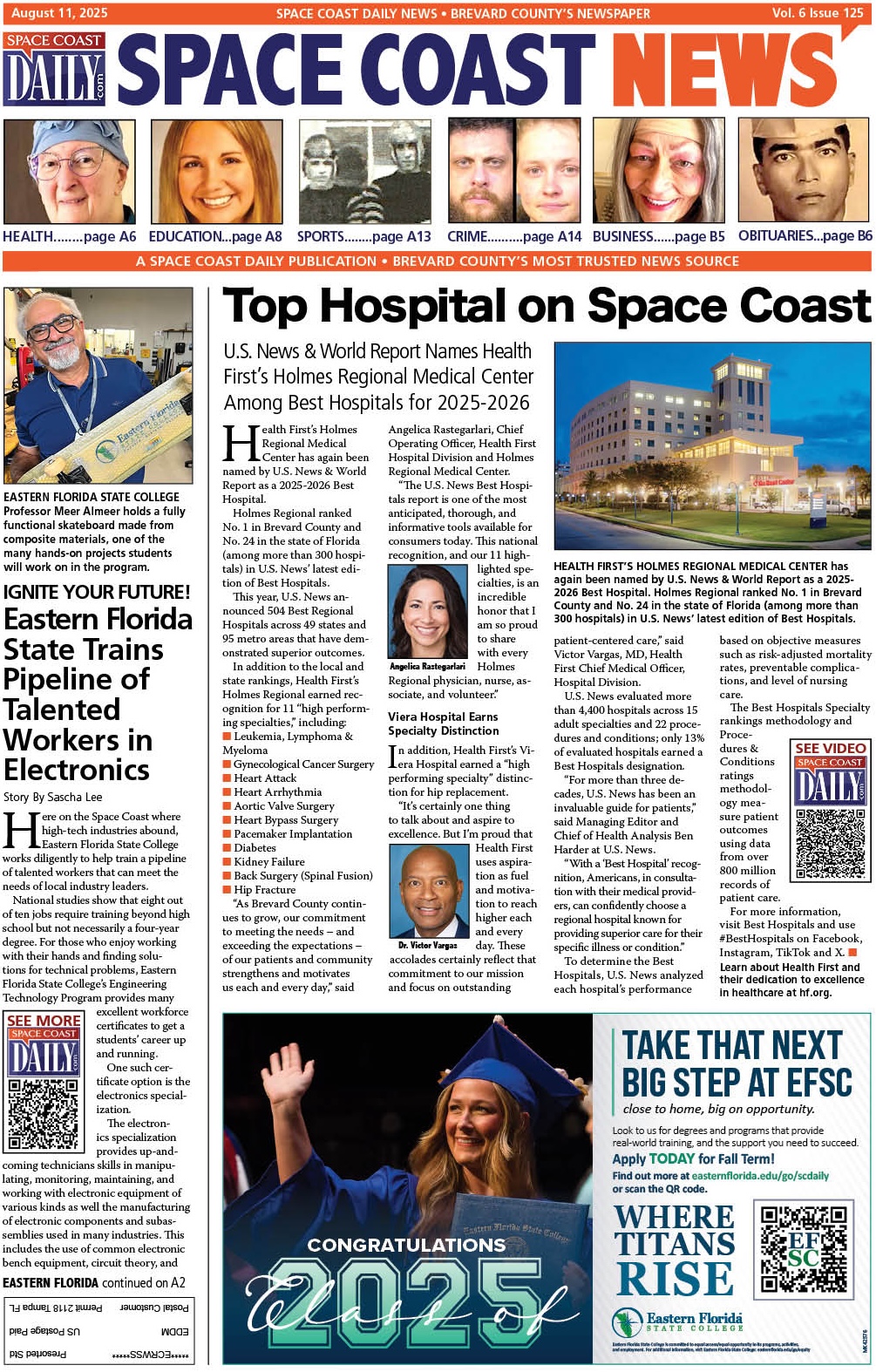The Day Technology Met the Blank Page: How an AI Essay Writer Rescued My Sanity
By Space Coast Daily // June 13, 2025

It was well past midnight. My coffee was cold, my eyes strained, and the assignment that had once seemed distant was now hours from its deadline. I had ideas — dozens of them — but no way to connect them, no narrative thread to bring it all together. The blinking cursor mocked me with every flash. It felt like failure was inevitable, until I recalled something I had seen earlier that week. A friend had mentioned using an AI essay writer. At the time, I dismissed it. But desperation has a way of shifting perspectives.
First Contact with Artificial Insight
I wasn’t looking for a miracle. I wasn’t even sure what the tool would do. But I typed in my topic, selected a prompt, and watched as the AI began outlining potential directions I could take. Not full paragraphs, not prewritten papers — but a framework. A spark. A suggestion of flow. That alone was enough to snap me out of paralysis. For the first time that night, I saw not an obstacle, but an opportunity. I didn’t have to write alone. I had something beside me — something mechanical, yet eerily insightful — showing me where to begin.
Learning to Co-Create
What I quickly learned is that an AI essay writer isn’t a ghostwriter. It’s a thinking partner. It gave me a rough sketch, sure, but it was my job to breathe life into it. I had to flesh out arguments, refine phrasing, validate sources. That back-and-forth dynamic surprised me. I’d never collaborated with software before. But as we iterated together — I editing and guiding, it suggesting and modeling — a new rhythm emerged. A rhythm that made the impossible suddenly manageable.
Rethinking the Writing Process
Traditional writing has long been portrayed as a solitary struggle — the tortured genius battling the page. But what if that myth has held us back? What if the process isn’t meant to be lonely? The more I worked with the AI tool, the more I came to see writing as dialogue, not monologue. The AI responded to my prompts, learned from my tone, adapted to my style. It didn’t steal my voice — it amplified it.
A New Way to Learn
What astounded me wasn’t just the support, but the subtle education happening in the background. The AI showed me where transitions were weak. It pointed out redundant phrases, overly long sentences, vague conclusions. Instead of fearing critique, I welcomed it. The machine’s feedback was instant, unemotional, and consistent. It wasn’t judgmental. It was just there, like a lighthouse in a storm, guiding me back to clarity every time I veered off course.
The Moral Conversation
Yes, I wrestled with ethics. Was this cheating? Was I crossing some invisible academic boundary? The answer, I realized, depended entirely on how I used it. If I copied and pasted without thought, then yes — I’d be doing a disservice to myself and my education. But I wasn’t doing that. I was learning from the AI, not outsourcing responsibility to it. I still had to think, argue, revise. The intelligence might have been artificial, but the effort was entirely real.
Transforming Anxiety into Action
Before I used AI, essays meant anxiety. Now, they mean momentum. I no longer sit stuck in a loop of overthinking. I start. I explore. I adapt. And even when I doubt myself, I know I have a companion that won’t judge or tire. That kind of psychological support — quiet, invisible, always available — is hard to quantify, but impossible to forget.
Beyond the Essay
This tool didn’t just make me a better student. It made me a more reflective thinker. It made me pause and consider structure, tone, clarity — things I used to overlook in a frantic rush to finish. The lessons extended into everyday communication. My emails are clearer. My proposals are tighter. My thinking is sharper. All because I had help learning how to express myself more effectively.

Talking About the Tools We Use
It’s funny how many students still hide the fact that they use tools like this. There’s a stigma — a sense that real writers don’t need assistance. But if we’re honest, everyone has help. Some have mentors. Some have tutors. Some have time. Others, like me, have a laptop and a tool that acts like a second set of eyes. That’s not something to hide. It’s something to acknowledge, understand, and use responsibly.
The Evolution of Effort
Hard work doesn’t have to mean struggle. It can mean thoughtful revision. It can mean knowing where to look for help, and how to implement it with integrity. The AI essay writer didn’t hand me success. It showed me how to reach for it. It didn’t take away the burden of thinking — it clarified it. And in the process, I became not just more efficient, but more invested in the work I was doing.
Sharing the Discovery
After that first essay, I kept using the tool — not for every assignment, and not always in the same way. Sometimes I just needed help organizing an outline. Sometimes I needed feedback on tone or structure. Sometimes I just wanted to test how clearly I was explaining a concept. The AI adapted. And I grew.
The Real Test
At the end of the semester, I had to write a major paper without external support. No AI, no draft buddy, no feedback until final submission. I panicked, but I also remembered everything I’d learned. The patterns. The transitions. The logic. I wrote slowly, intentionally. When the paper came back with a strong grade and a note about how well-structured it was, I smiled. Not because I had done it alone — but because I had learned how to.
Looking Forward with Curiosity
Now, I’m more curious than ever about what technology can do. Not just in writing, but in how we think, how we teach, how we learn. The conversation shouldn’t be about banning or fearing these tools. It should be about teaching students how to use them wisely. With guardrails. With understanding. With context.
A Quiet Revolution
There is a quiet revolution happening. Not loud, not obvious. But transformative. Students across the world are using AI not to cheat, but to catch up. To understand. To clarify. And slowly, the nature of writing itself is evolving — from solitary battle to intelligent collaboration. We don’t lose our voice in this process. We find it. We sharpen it. We learn how to use it more effectively.
Final Reflections
Looking back, I no longer see the blinking cursor as a threat. I see it as an invitation. A prompt waiting for my response. And now, I know that I don’t have to face that prompt alone. I have experience. I have memory. I have tools. Among them, yes, is an AI essay writer. But more importantly, I have confidence. And that’s something no machine can give. That’s something it helped me build on my own.












